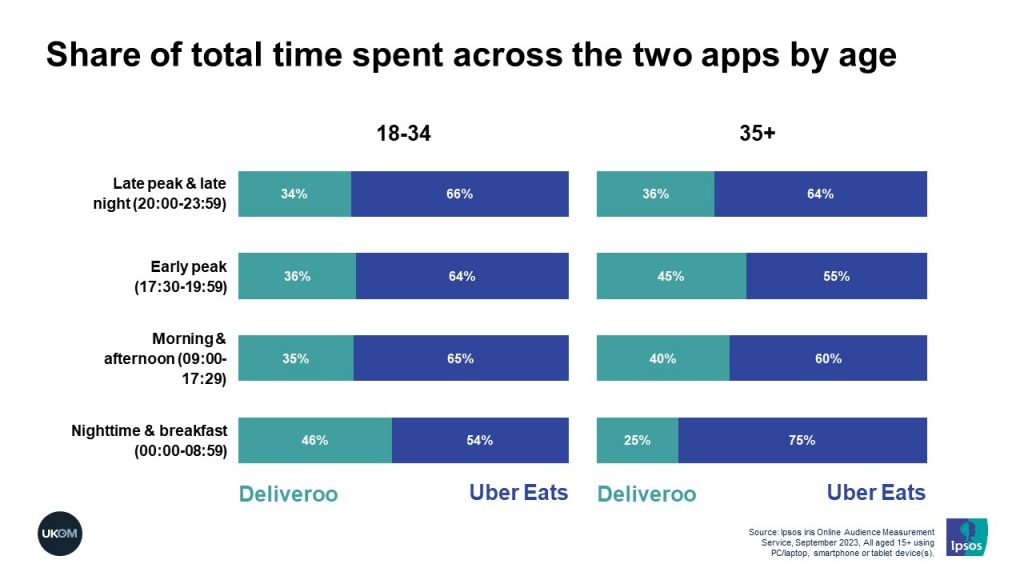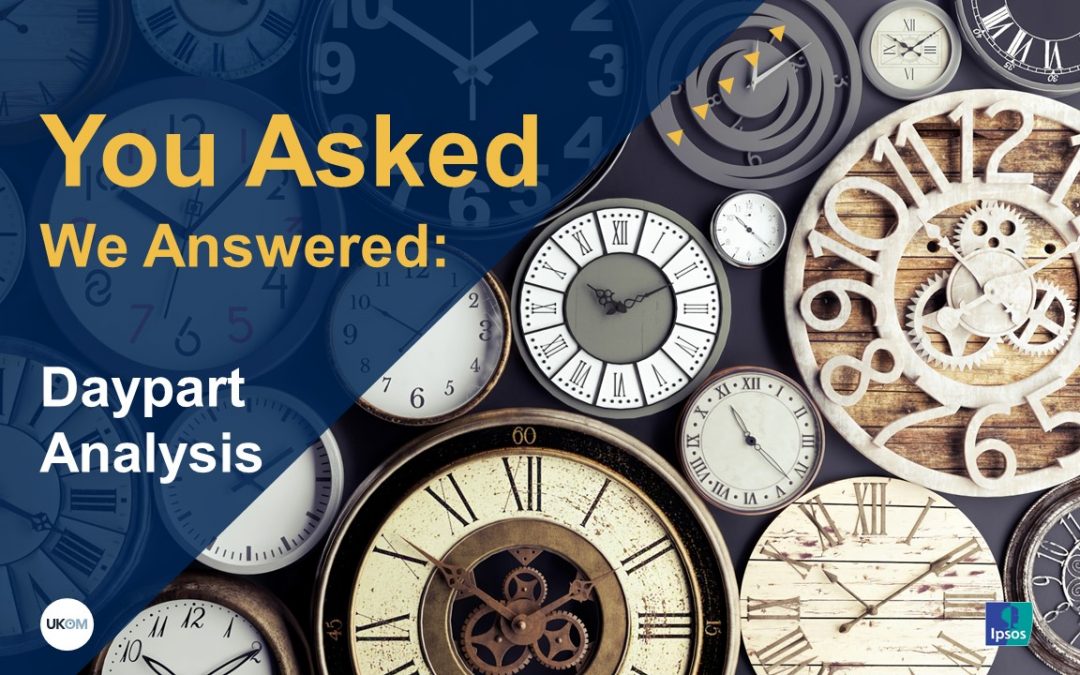How can dayparts analysis help me identify opportunities and threats?
The internet has revolutionised the fast food and delivery category. Now, at almost any hour of the day, you can order food to your door with just a few clicks or taps.
One of the brands that has been a major part of this revolution is Deliveroo. Deliveroo launched in the UK in 2013 and, ten years later, has enjoyed rapid growth with its app visited by 5.0 million people in September 2023.
But, with competition in the category hotting up, the last few years have seen Deliveroo diversify. It has done this is by partnering with supermarkets to offer grocery deliveries and more recently it has developed an ecommerce media proposition, enabling brands to advertise on its platform.
These developments will open up new opportunities for the brand, as well as see it competing on more fronts than ever before. Happily, Ipsos iris can play a role in helping to realise these opportunities and better understand these competitor threats.
Analysis of dayparts data, for example, can help Deliveroo on two fronts: firstly, by demonstrating how Deliveroo’s almost-round-the-clock delivery model gives it a unique selling point for advertising and grocery partners; and secondly by identifying where competition is greatest across breakfast, lunch, and dinner.
Opportunities: Selling Deliveroo’s audience
The biggest day part for Deliveroo, in line with the average app, is in the morning and the afternoon.

Where it really stands out though is during the ‘early peak’, between 17:30 and 19:59, which accounts for a third of the time spent on Deliveroo’s app – more than double the share for the average app.
In fact, this is the second biggest proportion of any of the top 100 most visited apps, with only Just Eat (34%) recording a greater share.
This should help Deliveroo to stand out in the increasingly crowded world of ecommerce media. For brands looking to reach customers during this post-work window, Deliveroo is the perfect platform.
It is also distinct from the supermarket and grocery category, meaning Deliveroo can fulfil slightly different briefs for CGP brands, reaching consumers at different times of day and likely in different need states.
Threats: Understanding share of engagement
In the chart below, we’ve sliced the day parts data another way, to show the share of time spent between Deliveroo and one of its closest competitors, Uber Eats.

Uber Eats is bigger than Deliveroo, with 7.3 million people using its app in September, hence why it has more time spent on its platform across all four dayparts.
However, we can see Deliveroo’s share of engagement drops from its largest in the early peak to its smallest during the late peak.
The question for Deliveroo is how does it sustain this high engagement later into the evening?
Ipsos iris can help to break down this late peak audience, to understand who these users are and the kinds of messaging or channels that may be best for engaging this audience.

While we can see that the share of engagement for Deliveroo is roughly the same across age groups during the late peak, there is a far bigger drop from the early peak among over 35s. This share has dropped by nine percentage point. This might be the easiest audience for Deliveroo to engage, if it wants to boost its late-night share.
If you want to understand how your audience changes across different times of day and, crucially, how this compares to your category and individual competitors, then Ipsos iris is here to help.
It directly supports commercial teams with business development, pitch responses, campaign planning, and the creation of sales collateral.
For more information about how Ipsos iris can answer your key business questions, contact the Ipsos iris commercial team.

